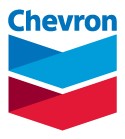Looking to spark some creativity and unlock your potential? Look no further than the simple yet effective process of brainstorming.
How to Brainstorm:
With just a poster board, some colorful markers or crayons, and your favorite beverage, you can start capturing your thoughts and ideas in a fun and engaging way. The key to successful brainstorming is to start with a brain dump. Don't worry about organizing your thoughts or placing them in any particular order on the paper. Instead, let your ideas flow freely and jot them down anywhere on the poster board.What to Think About:
Think back to past projects, team efforts, and accomplishments that you're proud of. Remember times when you followed through on a good idea and made a difference. Consider what projects were fun and what was challenging but rewarding. Reflect on times when you were part of something bigger than yourself and when you delivered results that you were proud of.Take Your Time:
Take your time with the brainstorming process and don't rush it. Sometimes background music helps as well. Relax, get away from distractions, and conduct a “brain dump” on paper to capture your thoughts. You will get to the details later.Create Your "Resume Inventory":
Once you've exhausted your thoughts, transfer them to an MS Word document and save it as your "Resume Inventory". This inventory is your career pantry and a valuable resource for navigating applicant tracking systems. Keeping your content word-friendly will help you present your skills and accomplishments effectively.Add Detail to Fully Tell Your Story
When it comes to documenting your accomplishments on your resume, it's important to fully capture the details of each accomplishment. The extra effort you put into capturing this information will develop the heart and soul of your resume. Here are three questions you can ask yourself to help fortify each statement:
Why did I do that?
Think about your motivation for the task or job responsibility. Was it an issue you volunteered to resolve? By sharing your motivation, you help potential employers see inside your head and heart, and understand what drives you as a team member.How did I do that?
Consider the process, procedure, protocol, software, or equipment you used. Did you create a team, work cross-functionally, use another language, or train people? Did you develop a new approach, product, or service? Did you use suggestive selling or "upsell" to grow the business? This information helps potential employers understand your skillset and the specific ways you can contribute to their organization.What impact, value, or results did I deliver?
It's not enough to simply list the tasks you completed. Managers want to know how you completed assignments better, faster, and cheaper than your competition. Did you increase sales or market share? Did you reduce waste, cycle time, or production costs? By quantifying your results with numbers and dollar signs, you grab the attention of potential employers and demonstrate the tangible value you can bring to their business.Remember, different organizations have different needs, so not every detail will apply to every resume. However, investing time in capturing these details will not only help you prepare a stronger resume, but also prepare you to answer critical interview questions with confidence.
